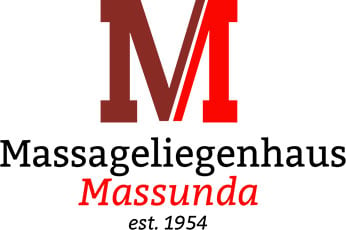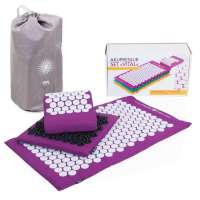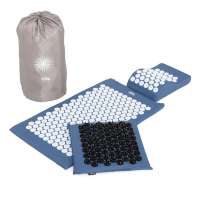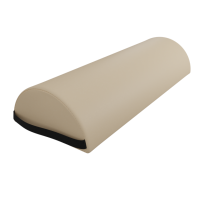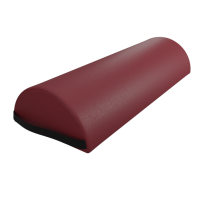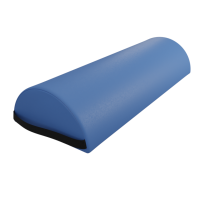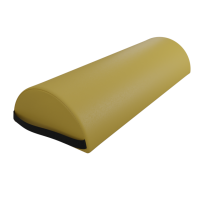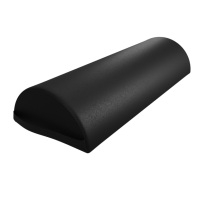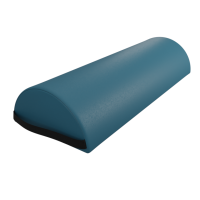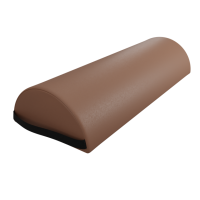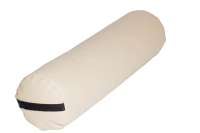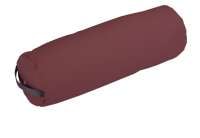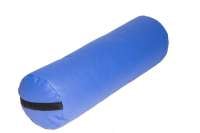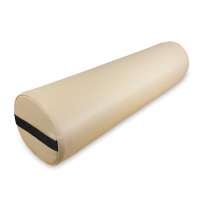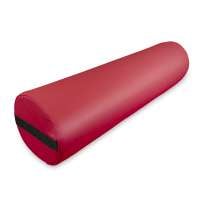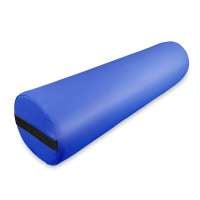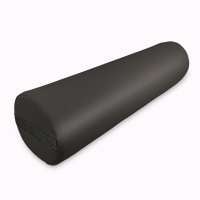
Reading in the dark damages your eyes, carbohydrates make you fat, and swimming after eating is dangerous. These are just a few examples of everyday myths that we still believe in, even though they have long been scientifically debunked. However, there are also some assumptions in physiotherapy that are based more on shaky ground than on a real foundation. So let's take a look at some beliefs and ask ourselves, following the example of Jonathan Frakes: Can you judge which one are fact and which one are fiction?
Myth 1: Stretching prevents injuries
It is a widely held belief that stretching extensively before exercise or training can prevent injuries. But what is the truth behind this myth? Numerous studies have shown that stretching alone has no significant effect on preventing injuries.
In the past, static stretching, in which a muscle is stretched and held for a certain amount of time, was a common practice in the warm-up routine of many athletes. It was believed to improve flexibility and relieve muscle tension, which in turn could prevent injuries. However, newer scientific findings have shown that static stretching alone is not effective in preventing injuries.
Static stretching before sports or training has no effect on reducing injuries such as muscle strains or ligament tears. In fact, intensive static stretching can even temporarily reduce muscle strength and performance, leading to reduced athletic performance.
However, does this mean that stretching should be completely avoided?
Not necessarily. Flexibility is still an important component of physical fitness and can also help prevent injuries. However, it is important that stretching is done in a dynamic and functional context, such as in a targeted mobility and flexibility training program.
A good warm-up phase before training or competition is also of great importance in preventing injuries. Dynamic warm-up exercises, such as active joint and muscle circles, light running or cycling, can improve blood flow, bring the muscles up to operating temperature, and promote mobility. It also helps improve coordination and body awareness, which can reduce the risk of injury.
In addition, it is important to manage training intensity appropriately. Excessive stress, too rapid an increase in training volume or intensity, and inadequate recovery can increase the risk of injury. A balanced training program that includes appropriate progression and variation can help minimize the risk of injury.
Conclusion
There is no magic solution to avoid injuries. A holistic approach with a combination of dynamic warm-up, appropriate training intensity, mobility training, and adequate recovery is crucial to minimize injuries and achieve optimal athletic performance.

Myth 2: It's normal to suffer from pain as you get older
It is a widely held misconception that as you age, it is normal to have pain and accept physical discomfort. However, pain should not be considered a normal part of the aging process. In fact, there are numerous ways to treat pain and improve quality of life in old age.
It is important to understand that pain does not have to be accepted as a fact of life, but that there are effective treatment options. Pain can have various causes, such as degenerative diseases, inflammation, or injuries. With increasing age, wear and tear on joints, muscles, and tissues can also occur. However, this does not necessarily mean that pain is inevitable.
An active lifestyle can have a big impact on pain management in old age. Regular exercise, such as
-
Walks
-
light weight training
-
or water gymnastics
can help strengthen muscles, improve joint mobility and reduce pain. Physical therapy can also be an effective option to treat pain and improve physical function.
In addition, there are also medication options for pain management in the elderly. Pain medications, both over-the-counter and prescription, can be used to relieve acute or chronic pain. However, it is important that these are taken under a doctor's supervision to avoid potential side effects and interactions with other medications.
It is also advisable to take a holistic approach to pain management. This may include relaxation techniques such as yoga or meditation to reduce stress, which can increase pain. A balanced diet and adequate sleep can also help improve overall well-being and reduce pain.
Conclusion
It is important to emphasize that pain in old age should not be simply accepted. There are many pain management options that can help relieve pain and improve quality of life as we age.
Pain should not be viewed as a normal part of the aging process, but as a problem that can be addressed and treated in order to live an active and pain-free life.
Myth 3: Ultrasound therapy speeds healing of injuries
Ultrasound therapy is often touted as an effective way to speed up the healing of injuries. However, there is insufficient scientific evidence to date that ultrasound therapy can actually accelerate the healing of injuries.
What is it ultrasound therapy?
Ultrasound therapy is a technique that introduces high-frequency sound waves into tissue to supposedly improve blood flow, reduce inflammation and promote tissue repair. Although there are some positive reports of patients who have benefited from ultrasound therapy, the scientific evidence for its effectiveness is limited.
Several studies have not shown significant improvement in injury healing with ultrasound therapy. There are also no clear guidelines for the use of ultrasound therapy, such as the optimal frequency, intensity, or duration of treatment. There is also no consensus on what types of injuries might benefit most from ultrasound therapy.
It is important to note that there are alternative therapeutic approaches that are considered more effective for healing injuries. For example, adequate rest to relieve pressure on affected areas and R.I.C.E. (rest, ice, compression, elevation) treatment can be helpful for acute injuries such as sprains or strains. Physical therapy, including targeted strength training and range-of-motion exercises, can also help restore function to injured tissues.
A balanced diet with adequate intake of protein, vitamins and minerals can also help tissue repair. In some cases, drug therapies, such as anti-inflammatory medications or pain medications, may also be useful, depending on the type and severity of the injury.
There is no one-size-fits-all solution for all injuries, and it is important to get appropriate diagnosis and treatment based on individual needs and circumstances.
Conclusion
Overall, one should be skeptical of the myth that ultrasound therapy accelerates healing of injuries. There is currently insufficient scientific evidence to support this, and there are alternative therapeutic approaches that may be more effective.

Myth 4: Core training is the key to a healthy back
Core training, the specific training of muscles in the trunk, is often considered a crucial factor in back health. However, it's important to understand that while core training is important for back stability, it's not the only factor that helps prevent back pain.
There is something to it...
It is true that strong core muscles can help reduce spinal stress and improve core stability. Well-developed abdominal and back muscles can help keep the spine in a neutral position and perform movements more efficiently, which can reduce the risk of injury. Core training can also improve posture and support functioning in daily life and sports activities.
However...
...Core training alone is not enough to ensure a healthy back. There are other important factors that contribute to back health. For example, good posture is critical to avoid unnecessary stress on the spine. Maintaining an upright posture while sitting, standing and walking relieves pressure on the spine and can prevent back pain.
Regular exercise is also of great importance for a healthy back. Activities such as
-
Walking
-
Swimming
-
Cycling
-
or yoga
can strengthen muscles, improve flexibility and promote circulation. A combination of endurance, strength and flexibility training can help keep the back muscles and surrounding tissues in good condition.
It's also important to rethink everyday exercise habits, such as avoiding prolonged sitting and taking regular breaks to stretch and move around. Ergonomic workstation design and proper lifting of heavy objects are also critical to reducing spinal stress.
Conclusion
It is important to emphasize that individual needs and circumstances must be considered when it comes to back health. Core training can be an important component, but it is not the sole key to a healthy back. A comprehensive approach that includes good posture, regular exercise and healthy movement habits is critical to promoting long-term back health.
Myth 5: Running shoes with more padding prevent injury
It is a common belief that wearing running shoes with more cushioning can help prevent or reduce running injuries. However, there is no clear evidence that running shoes with more cushioning can actually prevent injuries.
Although well-cushioned running shoes may provide some protection when it comes to shock absorption and impact force absorption, it is important to understand that wearing running shoes alone is not enough to prevent running injuries. There are many other factors that play a role and help prevent injuries.
Good running technique
An efficient running technique can help reduce the stress on the joints and muscles and minimize the risk of injury. It is advisable to maintain an upright posture, stable foot strike and appropriate stride length to develop good running technique.
A gradual increase in training intensity
Increasing the volume or intensity of training too quickly can lead to overuse and increase the risk of injury. It is important to give the body enough time to adapt and increase training gradually to minimize injury.
In addition, other factors also play a role, such as
-
choosing the right surface for running
-
the use of appropriate footwear according to the individual running style
-
Strengthening the muscles through targeted strength training to make the body more resistant to injury
Conclusion
It is important to emphasize that choosing running shoes with more cushioning alone is not enough to prevent injuries.
A holistic approach is required, including good running technique, gradual training progression, and balanced muscle strengthening, in addition to proper shoe selection.
It is advisable to consult with a professional in running technique or a qualified sports medicine physician for individualized recommendations on how to prevent running injuries. Every runner is unique and it is important to consider personal needs and conditions to best prevent injury.

"I have to disappoint you, this story is a work of fiction." - Jonathan Frakes
Here are three more myths we all keep falling for.
Cold treatment is the best option for acute injuries
Although the use of cold (e.g., ice treatment) is often recommended for acute injuries, there is some controversy about whether cold treatment is always the best option. There is growing evidence that heat treatment may be more effective in some cases to promote circulation and aid healing. It is important to consider the type and severity of the injury and consult a qualified professional to choose the appropriate therapy.
As much therapy as possible
More is not always better. In some cases, excessive therapy or overtreatment can lead to unnecessary costs, wasted time and potential risks. Appropriate, individualized therapy based on an accurate diagnosis and treatment planning is often more effective than excessive therapy. It is important to work with a qualified therapist to determine the right amount and type of therapy.
Back pain requires rest and inactivity
While rest and sparing may be necessary in some cases, it is generally not recommended to remain completely inactive when experiencing back pain. In fact, prolonged inactivity can further weaken the muscles and lead to prolonged discomfort. Individualized active therapy, including targeted exercise training and movement, can often be more effective in relieving back pain and promoting recovery.
How did you like the article?
With your feedback, we can improve our content.
❤️ Very interesting! - ☺️ Okay. - ☹️ Not interesting.

